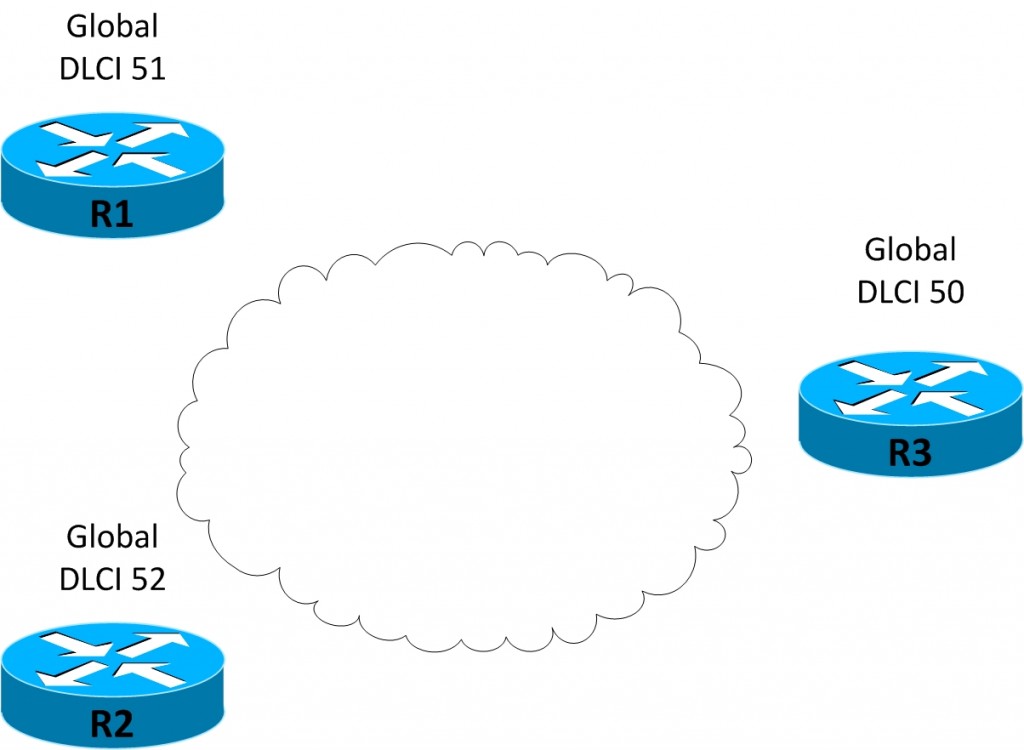Frame Relay defines how to deliver frames from one router to another across the Frame Relay network. The router uses a single physical access link to connect to the Frame Relay switch. The single access link may have many VCs connecting it to many remote routers. There must be something to identify each of the remote routers. That something is the data-link connection identifier or DLCI – the Frame Relay address.
The DLCI is a 10-bit value written in decimal. The possible range of DLCIs is 0-1023, however the low- and high-end values are usually reserved and typical DLCI values range from around 17 to a little less than 1000.
DLCIs can be simple and confusing at the same time. The most important fact about the DLCI is that it does not identify a VC but only a single hop on the VC. A Frame Relay service provider assigns two local DLCI values to each PVC: one for each end of the PVC to be used between the DTE router and DCE switch.
Frame Relay Global Addressing
Global addressing is a Frame Relay addressing scheme that serves to lessen the confusion about DLCIs. Global addressing makes DLCIs look like MAC addresses in Ethernet LANs. Global addressing is a very simple convention of how DLCI values are assigned when planning a Frame Relay network so that working with DLCIs is much easier. Global addressing does not change anything inherently with DLCIs or Frame Relay addressing. It simply chooses such DLCI values that they become more intuitive to understand and deal with.
Here is how global addressing works. The Frame Relay service provider supplies a configuration sheet and a diagram similar to Figure 12-x, with global DLCIs shown.
Figure 12-12 Frame Relay Global DLCIs

Frame Relay global addressing as planned in Figure 12-12 is used to place DLCIs in Frame Relay frames as shown in Figure 12-13. For example, router R1 uses DLCI 50 when sending a frame to router C, because router R3’s global address is 50. In a similar manner, router R3 uses DLCI 51 when sending frames over the VC to router R1. The beauty of global addressing is that it works like addressing in a LAN with a single MAC address for each device, making it much more logical to most people.
Figure 12-13 DLCI Values for Two PVCs

In Figure 12-13, the PVC between routers R1 and R3 has two DLCIs assigned by the service provider, one at each end. R1 uses local DLCI 50 to identify the PVC and R3 uses local DLCI 51 to identify the same PVC. Similarly, the PVC between routers R2 and R3 also has two DLCIs assigned, one at each end. In this case, R2 uses local DLCI 50 while R3 uses local DLCI 52.
DLCI values are only locally significant and can be reused on different links. In Figure 12-11, both R1 and R2 use DLCI 50 to identify their respecitve PVCs which is perfectly fine. However, the local DLCIs on a single access link must be unique among all PVCs that exist on that access link. If you work for an enterprise, you need not worry about DLCIs as their values are chosen by the provider.
The local router is aware of only the local DLCI and it effectively identifies a PVC for the router. When you configure a router, you only configure the local DLCI value and dont need to concern yourself with DLCI value at the other end of the PVC.
The Frame Relay header lists only a single DLCI field which performs the addressing function. It does not identify both a source and destination address like the Ethernet and IP headers. The Ethernet header has both a source and destination MAC address, while the IP header contains both source and destination IP addresses.
The DTE router identifies a PVC with the DLCI assigned to that VC by the provider. The DTE router will send all packets for that VC encapsulated in a Frame Relay frame with that specific DLCI value listed in the frame header. The service provider itself assigns DLCI values to the customer and it knows which DLCI values are to be used at the two ends of a VC to enable end-to-end communication on a VC.
Frame Relay networks have some additional considerations when it comes to assigning subnets and IP addresses on interfaces. You can have:
- Single subnet covering all Frame Relay DTEs
- One subnet per VC
- A hybrid of the first two options
